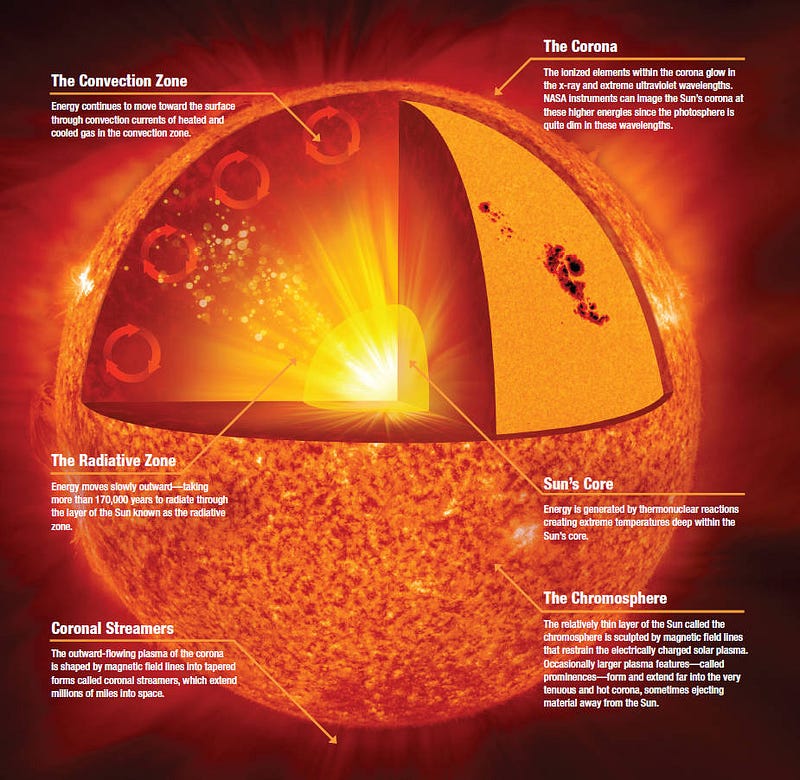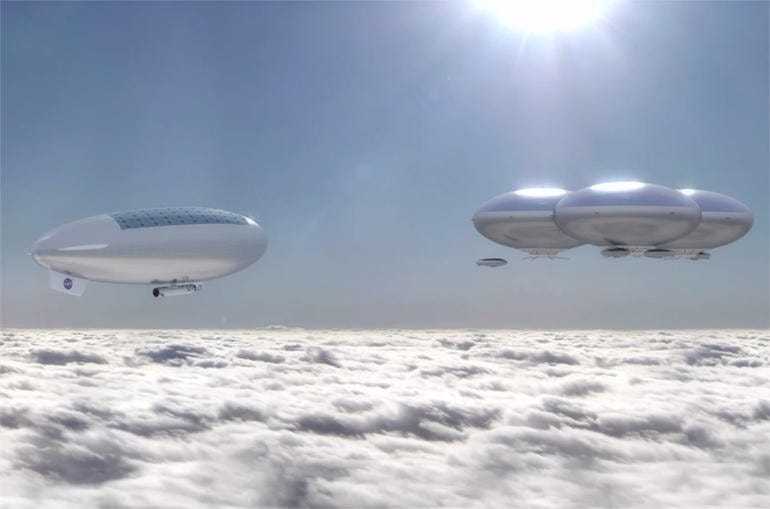Ask Ethan: When will the Sun make Earth uninhabitable?

And will it get too cold or too hot for our habitability?
“What, I sometimes wonder, would it be like if I lived in a country where winter is a matter of a few chilly days and a few weeks’ rain; where the sun is never far away, and the flowers bloom all year long?” –Anna Neagle
We’ve had a pretty good run on Earth so far. Since our Sun first formed some 4.5 billion years ago, our proto-Earth formed in the inner Solar System, an early collision created the Moon/Earth system we know today, and a combination of initial conditions and the late-heavy bombardment gave rise to our early oceans and atmosphere. For over four billion years, the Sun has shone continuously and life has taken hold and thrived on our world. But this can’t last forever! Will it be the Sun petering out of fuel that leads to our demise? That’s the subject of this week’s Ask Ethan, courtesy of Len Latorre, who wants to know:
Is the Sun’s nuclear energy decreasing or stable? How long do we have to exist on this planet earth if the sun is decreasing it’s nuclear fuel?
Assuming there are no disasters caused by the Earth itself (like an Earth-coating supervolcano or a poisoning of the biosphere) or by the Universe at large (like a super-impactor, a sterilizing gamma-ray-burst or a too-close supernova), the Sun will eventually ruin all life on Earth.

You see, stars like our Sun are powered by nuclear fusion: by the fusion of the lightest, most abundant element in the Universe (hydrogen) into the second lightest, most abundant element (helium) in a chain reaction. The chain reaction where the Sun derives most of its power from involves fusing:
- two protons together, forming deuterium, a positron (which annihilates with an electron, producing high-energy photons), a neutrino and free energy,
- then a deuteron with a proton, producing helium-3, a high-energy photon and free energy,
- and then two helium-3 nuclei fuse together, producing helium-4, two free protons and even more free energy.
This is the most common source of the Sun’s energy, where a total of 0.7% of the initial mass of four protons gets converted into energy in this reaction, via Einstein’s E = mc2. Every second, an incredible 4 × 1038protons fuse into helium-4, releasing approximately 4 × 1026 Watts of energy on a continuous basis.

The Sun is also tremendous and massive, with a total of somewhere around 1057 particles making it up. Yet as big as these numbers are, the total amount of fuel the Sun possesses is finite, and given enough time, the Sun will burn its fuel out. Even more pressing is the problem that the entire Sun doesn’t fuse this hydrogen: it’s only the core of the Sun, where the temperatures are highest. The very first protons won’t fuse until you’re more than halfway towards the Sun’s center, exceeding a temperature of 4,000,000 K. And it’s only the very inner portion, where temperatures top 10,000,000 K (and reach a maximum of 15,000,000 K in the Sun) that 99% of the Sun’s energy is produced.

What this means is that, over time, the innermost portions of the Sun run out of fuel the fastest, as they burn hydrogen into helium to completion. You might expect, as Len did, that this would mean that the Sun would dim over time, as the fuel for its fire begins to be burned up. But without those reactions happening in the innermost core, what happens instead is the core begins to contract, and that gravitational contraction releases even more energy, causing the internal temperature to rise. When this happens, fusion begins to occur at faster rates and over a greater volume of the Sun’s interior. In other words, over time, the energy output of the Sun will increase, and this is something that’s been happening for more than four billion years!

When our Sun was a newborn star, it likely only had about 75–80% of the power output it has today. Thanks to the flora, fauna, ocean and atmospheric properties of our planet, we’ve been able to adapt to those steadily increasing temperatures for the entire history of our Solar System thus far. But there’s going to be a limit: at some point, the Sun’s luminosity will increase so much that the Earth, at our present distance from the Sun, will get hot enough that our oceans will boil. When this happens, the same runaway greenhouse effect that took place on Venus — where a thick layer of clouds enshrouded the planet — will happen on Earth as well, and all life on the surface will cease to exist.

It’s possible that some forms of life will persist high up in the clouds, and it’s possible that humanity might figure out how to make a go of it (if we’re still around) under those conditions. But this will happen long before the Sun’s core runs out of hydrogen fuel. It’s true that our Sun will, in approximately 5-to-7 billion years, undergo the following steps:
- run out of core hydrogen,
- expand into a very bright subgiant star, as hydrogen burns in a shell around the core,
- begin fusing helium in its core when temperatures reach the critical threshold,
- expand into a true red giant,
- and eventually die, blowing off its outer layers into a planetary nebula with the core contracting down to a white dwarf.

But after only approximately one-to-two billion years longer (by most estimates), the Sun will be hot enough that the oceans will begin to boil. At that point, we’ll have to find a new home, as the Earth’s surface will be uninhabitable. In the end, this will be the only type of global warming that matters, as the Sun will get a lot hotter before the big, eternal freeze our Solar System is in for. We’re most of the way through our Earth being an inhabitable world, so best to make the absolute most of the time we have left!
Submit your Ask Ethan questions to startswithabang at gmail dot com!
This post first appeared at Forbes, and is brought to you ad-free by our Patreon supporters. Comment on our forum, & buy our first book: Beyond The Galaxy!





